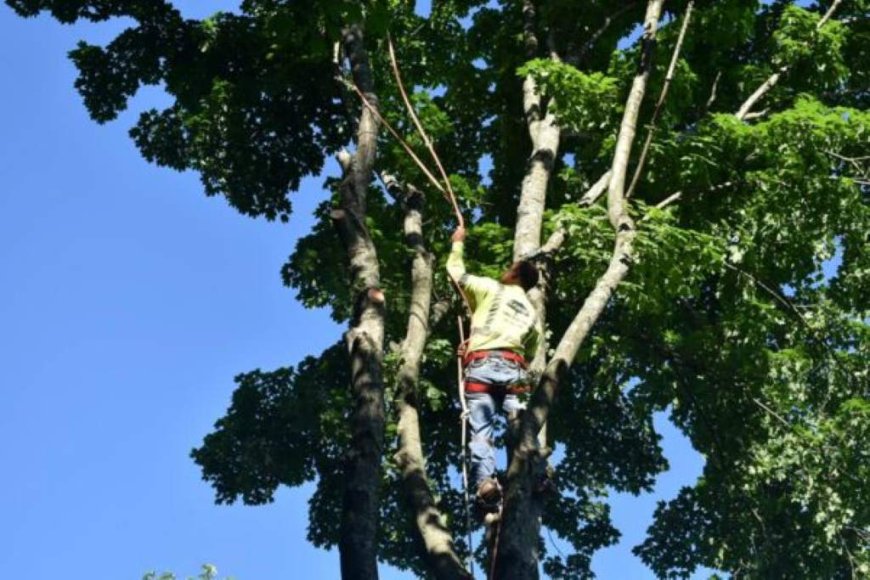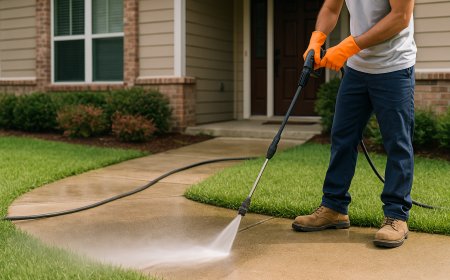Complete Guide to Tree Service: Types, Benefits & How to Choose the Right Provider
Tree services are more than just yard work — they’re an essential part of keeping your property safe, beautiful, and valuable. From emergency removals to routine trimming, a professional tree service provider can make a huge difference.

Trees offer beauty, shade, and a peaceful environment but only when theyre well cared for. Unhealthy or neglected trees can become hazards, costing you time, money, and peace of mind. Thats where professional tree services come in.
Overview of What Tree Services Include
Tree service companies provide a wide range of care from simple trimming to emergency removal. Whether you're dealing with a sick tree or just want to keep your landscape looking sharp, theres a solution for every situation.
Types of Tree Services
Tree Trimming and Pruning
This isnt just about looks. Trimming removes dead or weak branches that could fall and cause harm. Pruning promotes healthy growth, better shape, and flowering or fruit production.
Tree Removal
Sometimes, trees must come down whether due to disease, death, or danger to property. Professionals ensure safe removal with minimal disruption to your yard.
Stump Grinding and Removal
Leftover stumps can be eyesores and trip hazards. Stump grinding gets rid of them quickly, helping prevent insect infestation and improving your landscapes appearance.
Tree Planting and Transplanting
Want to add shade or a decorative tree to your yard? Arborists help you choose the right species for your soil, climate, and sunlight, ensuring a healthy start.
Emergency Tree Services
Storms, accidents, or disease can cause sudden tree failures. Emergency tree services are available 24/7 to handle urgent removals and cleanups.
Tree Cabling and Bracing
Some trees grow in ways that make them unstable. Cabling and bracing support weak limbs or trunks to prevent collapse, extending the life of the tree.
Tree Health Assessments and Maintenance
Certified arborists evaluate trees for disease, pests, nutrient deficiencies, and structural issues offering treatment plans to keep your trees thriving.
Benefits of Professional Tree Services
Safety for People and Property
Dead limbs and unstable trees pose real threats. Professionals use the right equipment and knowledge to handle dangerous trees safely.
Improved Curb Appeal
Healthy, well-shaped trees instantly boost your homes visual appeal and make your landscape more inviting.
Enhanced Tree Health and Longevity
Routine care prevents disease, pest infestations, and structural issues, giving your trees a longer, healthier life.
Prevention of Legal Issues
Falling limbs or invasive roots can lead to disputes with neighbors or lawsuits. Regular tree service helps you stay ahead of these risks.
Increased Property Value
A well-maintained yard with healthy trees can significantly raise your propertys market value.
Tree Services for Different Needs
Residential Tree Services
Tailored for homeowners, these services focus on aesthetics, safety, and tree health whether its for your backyard maple or front yard oak.
Commercial Tree Services
Businesses need tidy, safe landscapes too. These services often include large-scale tree management for office parks, apartment complexes, and retail spaces.
Municipal and Public Tree Services
City parks, sidewalks, and public roads require routine care and emergency attention. Municipal tree services focus on public safety and long-term planning.
Signs You Need a Tree Service
Dead or Dying Trees
Brittle branches, lack of leaves, and fungi at the base are common indicators. Dead trees should be removed quickly to prevent hazards.
Overhanging or Falling Branches
Limbs hanging over your house, driveway, or power lines need to be pruned or removed immediately.
Tree Growing Too Close to Structures
Trees too close to buildings can damage foundations, roofs, or utility lines and may need trimming or relocation.
Trees Damaged by Storms
High winds, heavy snow, or lightning can weaken trees, making them prone to falling.
Visible Disease or Pest Infestation
Look for holes in leaves, bark damage, discolored foliage, or insects swarming these signs call for expert attention.
How to Choose the Right Tree Service Provider
Look for Certifications and Insurance
A certified arborist has the training to do the job right. Insurance protects you in case of accidents.
Check Reviews and References
Read online reviews and ask for referrals to make sure youre hiring someone reputable.
Ask About Services and Equipment
Make sure the company offers what you need from trimming to emergency services and has modern, well-maintained equipment.
Request Transparent Pricing
Get a detailed quote in writing. Beware of vague pricing or unusually low offers.
Verify Emergency Availability
Storms dont wait and neither should your tree company. Ask about 24/7 service availability.
Common Mistakes to Avoid
Hiring Unlicensed or Uninsured Contractors
This can cost you more in the long run. If something goes wrong, you may be liable.
Ignoring Warning Signs from Trees
Dont wait until a limb falls through your roof. Early action prevents major problems.
Delaying Preventative Maintenance
Its cheaper and easier to maintain healthy trees than to remove dangerous ones.
DIY Tree Work Without Experience
Tree work is dangerous. Without proper tools or training, you risk injury or serious property damage.
Cost of Tree Services
Factors Affecting the Price
-
Tree size and type
-
Location and accessibility
-
Equipment and labor needed
-
Emergency vs. routine work
Average Costs for Common Services
-
Tree trimming: $200$800
-
Tree removal: $300$2,500+
-
Stump grinding: $100$400
-
Emergency service: $500 and up
Tips for Budgeting and Saving
-
Combine services in one visit
-
Schedule maintenance in off-peak seasons
-
Ask for package deals or discounts
Tree Care Tips for Homeowners
Regular Inspections
Check trees each season for damage, pests, or irregular growth.
Proper Mulching and Watering
Mulch retains moisture and protects roots, while deep watering encourages healthy growth.
Seasonal Maintenance Guide
-
Spring: Prune dead limbs and inspect for winter damage
-
Summer: Monitor for drought stress and pests
-
Fall: Remove dead leaves and prep for winter
-
Winter: Avoid heavy snow accumulation on branches
Conclusion
Tree services are more than just yard work theyre an essential part of keeping your property safe, beautiful, and valuable. From emergency removals to routine trimming, a professional tree service provider can make a huge difference. So, whether you're planning a landscape upgrade or responding to a fallen limb, dont go it alone trust the experts to get the job done right.
FAQs
What is the difference between tree trimming and pruning?
Trimming shapes the tree and removes overgrowth, while pruning targets dead or diseased branches for health and structure.
How often should I schedule tree service?
Annually is a good rule of thumb, but large or old trees may require more frequent care.
Is tree removal always necessary?
No. Removal is only needed if a tree is dead, diseased, hazardous, or in the wrong place.
Can I perform tree services myself?
Minor trimming might be fine, but anything involving height, tools, or large branches should be left to pros.
What certifications should a tree service company have?
Look for ISA Certified Arborist credentials, liability insurance, and workers comp coverage.













































